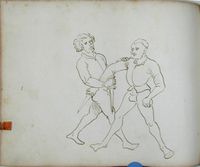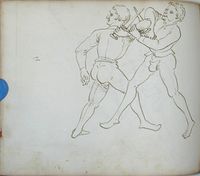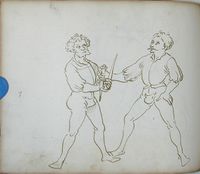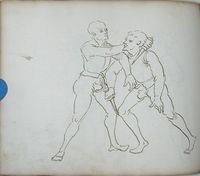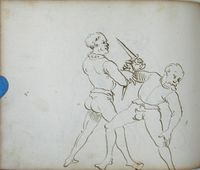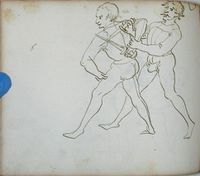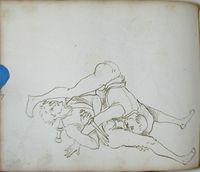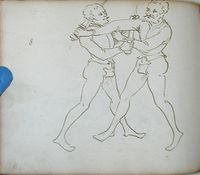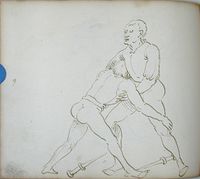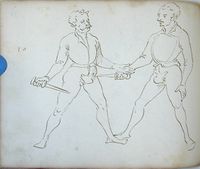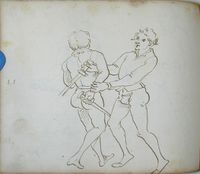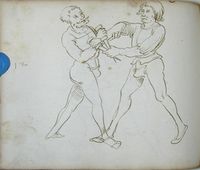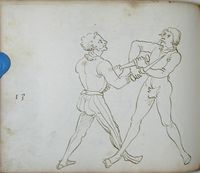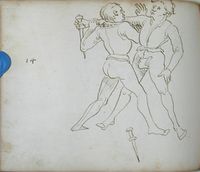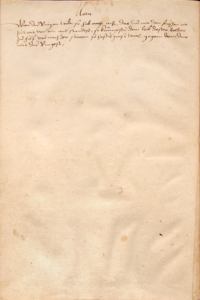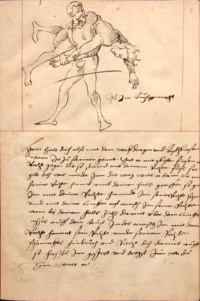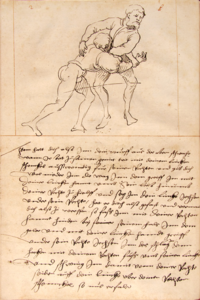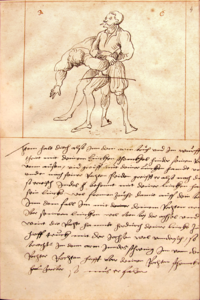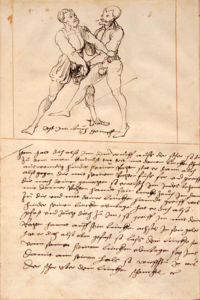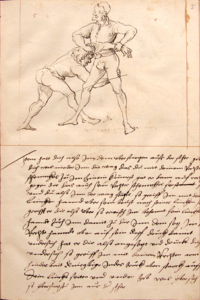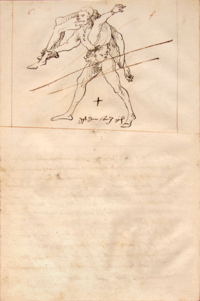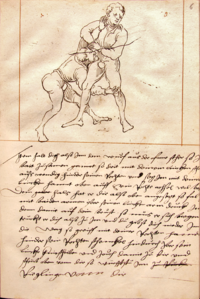|
|
You are not currently logged in. Are you accessing the unsecure (http) portal? Click here to switch to the secure portal. |
Gregor Erhart
| Gregor Erhart | |
|---|---|
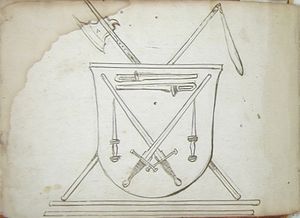 Coat of Arms from Erhart's manual | |
| Born | ca. 1468 (?) Ulm, Germany |
| Died | 1540 Augsburg, Germany |
| Spouse(s) | Anna Daucher |
| Occupation | Sculptor |
| Influenced | Paulus Hector Mair |
| Genres | |
| Language | Early New High German |
| Archetype(s) |
|
| Manuscript(s) |
|
| Concordance by | Michael Chidester |
Gregor Erhart (ca.1468? – 1540) was a 16th century German sculptor. He was born at Ulm, the son of sculptor Michel Erhart. No record of his life exists before 1494, when he was already working in Aurgburg, Germany.[1] He married Anna Daucher sometime before he was made a master in 1496, and he continued to live in Augsburg until his death in 1540.[1] Because Erhart never left a signature, his work can only be identified by stylistic analysis or researching the original commission. His greatest artistic achievement was probably the Madonna of Mercy that he sculpted for Holy Roman Emperor Maximilian I in 1515; in fact, there are no records of Erhart receiving any commissions after 1525.[1]
HEMA Contributions
Though there are no records of Erhart participating in the fencing guilds, in 1533 he sketched the MS E.1939.65.354. This illustrated fencing manual covers Jörg Wilhalm Hutter's longsword and a series of uncaptioned devices of dagger and grappling; he also included copies of a number of unillustrated treatises by masters who stood in the tradition of Johannes Liechtenauer. It later passed to Lienhart Sollinger, and subsequently Paulus Hector Mair; both men used it as a source for their respective fencing compendia. In addition, some time between 1533 and his death in 1540, he sketched the first part of the Codex I.6.2º.4, a repetition of several grappling devices from his first manuscript to which he added descriptive text.
Images |
Archetype (1533) | |
|---|---|---|
| [85v] [No text] | ||
| [86v] [No text] | ||
| [87v] [No text] | ||
| [88v] [No text] | ||
| [89v] [No text] | ||
| [90v] [No text] | ||
| [91v] [No text] | ||
| [92v] [No text] | ||
| [93v] [No text] | ||
| [94v] [No text] | ||
| [95v] [No text] | ||
| [96v] | ||
| [97v] [No text] | ||
| [98v] [No text] |
Images |
Archetype (1533) |
Augsburg Version (1545) | |
|---|---|---|---|
| [2v] | |||
| [100v] [No text] | [3r] | ||
| [101v] [No text] | [3v] | ||
| [103v] [No text] | [4r] | ||
| [105v] [No text] | [4v] | ||
| [107v] [No text] | [5r] | ||
| [108v] [No text] | [5v] [No text] | ||
| [109v] [No text] | [6r] |

